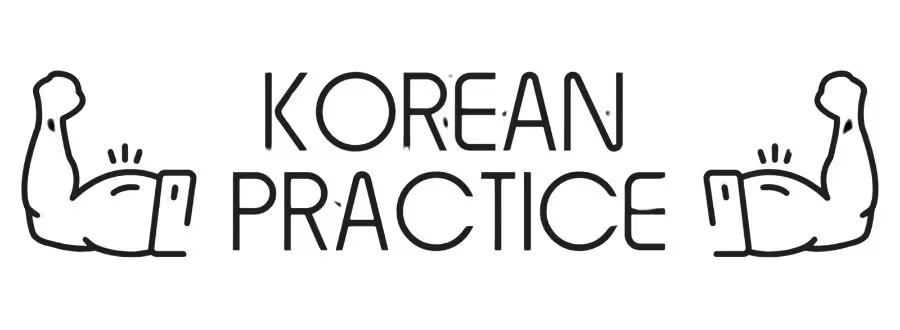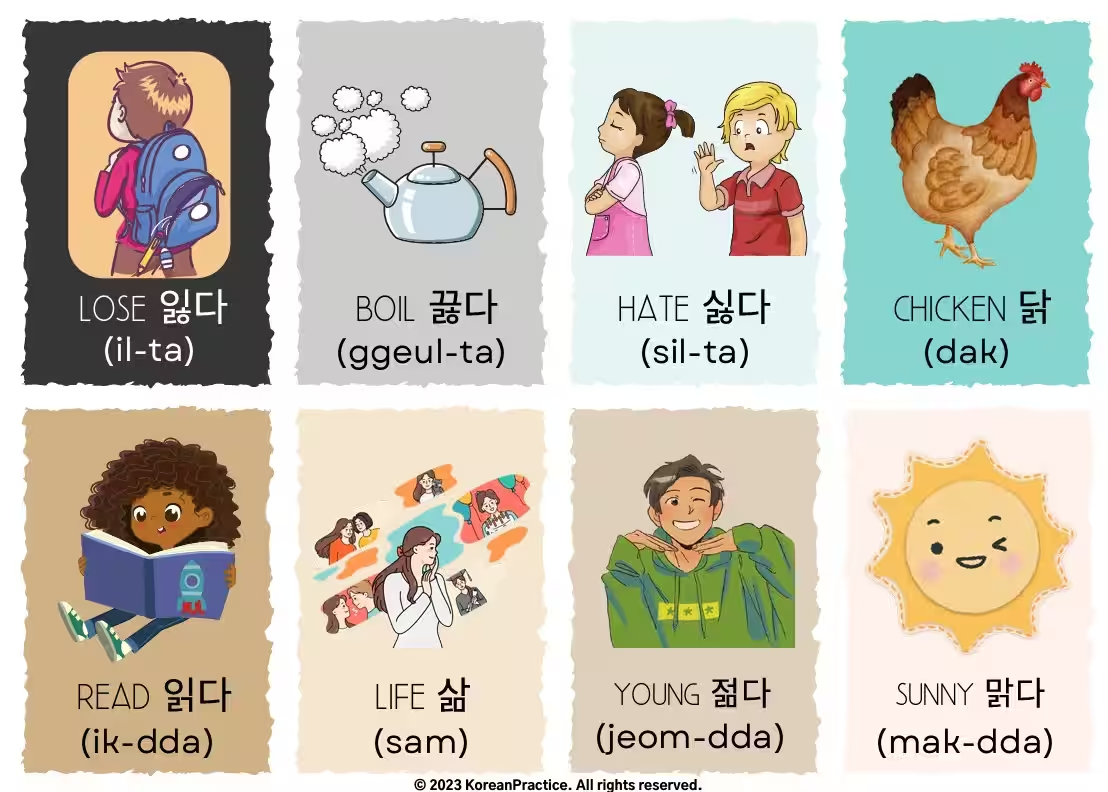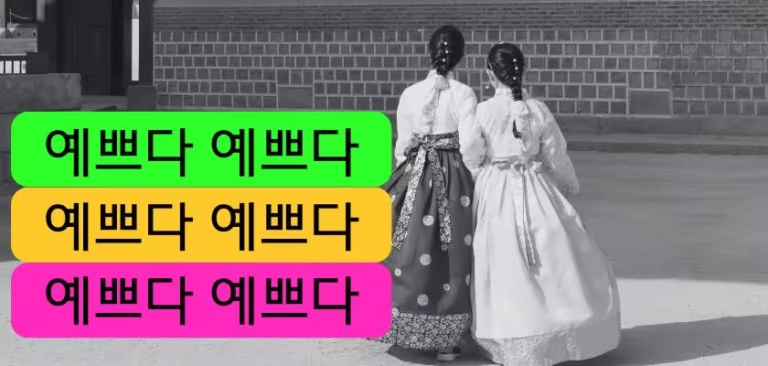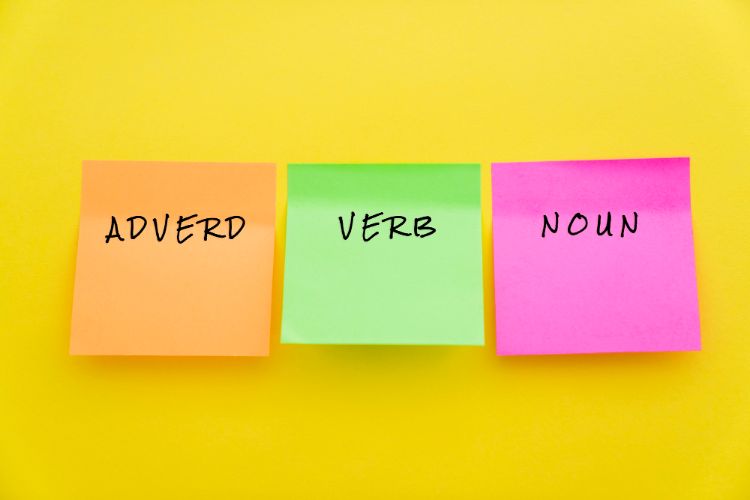Suh ChangWhoon
Written by 서 창훈, a certified Korean teacher with 14+ years of experience in Japan. He previously worked as a government officer, cybersecurity consultant, and English interpreter. Today, he teaches Korean in real classrooms without complex grammar explanations — instead, he trains students’ brains to speak naturally. His unique method is now the foundation of all his Korean courses.
Table of Contents
Learning a new language can be an exciting and challenging journey, especially when it comes to conjugating verbs. Korean verbs conjugation, in particular, can be overwhelming for beginners.
However, with the right techniques and practice, anyone can master this essential aspect of the Korean language. In this article, I will explore the basics of Korean verbs conjugation and provide useful tips to help you become proficient in using different verb tenses.
Understanding Korean Verbs Conjugation
Like most languages, Korean verbs change their form according to tense, politeness level, and subject. There are six basic tenses in Korean: present, past, future, present continuous, past continuous, and future continuous. Each tense is further divided into four levels of politeness: informal, formal, polite, and honorific. To conjugate a verb in Korean, you need to consider both the tense and the politeness level.
Basic Conjugation Rules
Korean verbs have two forms: the dictionary form and the conjugated form. The dictionary form is the plain form of the verb, and it ends in 다 (da) and 이다 (ida). To conjugate a verb, you need to remove 다 or 이다 and add the appropriate verb ending.
Present Tense
The present tense is one of the most commonly used tenses in the Korean language. To conjugate a verb in the present tense, you need to add certain endings to the verb stem. The endings vary depending on the level of politeness and formality.
For informal situations, you can use the informal present tense ending -아/-어/-여 (-a/-eo/-yeo). For example:
- 가다 (ga-da) → 가 (ga)
- 먹다 (meok-da) → 먹어 (meo-geo)
- 일하다 (il-ha-da) → 일해 (il-hae)
For formal situations, you can use the formal present tense ending -읍니다/-습니다/ (-eum-ni-da/-seum-ni-da/). The ending is the same as the informal present tense ending, but it is considered more polite and respectful. For example:
- 가다 (ga-da) → 갑니다 (gam-ni-da)
- 먹다 (meok-da) → 먹습니다 (meog-sseum-ni-da)
- 일하다 (il-ha-da) → 일합니다 (il-ham-ni-da)
For polite situations, you can use the polite present tense ending -아/-어/-여요 (-a/-eo/-yeo-yo). The ending is similar to the informal and formal present tense endings, but it is more polite than the informal ending and less formal than the formal ending. For example:
- 가다 (ga-da) → 가요 (ga-yo)
- 먹다 (meok-da) → 먹어요 (meo-geo-yo)
- 일하다 (il-ha-da) → 일해요 (il-hae-yo)
For honorific situations, you can use the honorific present tense ending -십니다 (-sim-ni-da). The honorific ending is the most polite and respectful ending and is used to show respect to someone of higher status or age. For example:
- 가다 (ga-da) → 가십니다 (ga-sim-ni-da)
- 먹다 (meok-da) → 드십니다 (deu-sim-ni-da)
- 일하다 (il-ha-da) → 하십니다 (ha-sim-ni-da)
By mastering the present tense conjugation rules, you can effectively communicate in various social situations. Practice using different endings for each level of politeness and formality to become proficient in Korean verbs conjugation.
Past Tense
The past tense is another commonly used tense in the Korean language. To conjugate a verb in the past tense, you need to add certain endings to the verb stem. Similar to the present tense, the endings vary depending on the level of politeness and formality.
For informal situations, you can use the informal past tense endings –았/-었어 (-at/-eo-sseo). The ending you use depends on the final consonant of the verb stem. If the verb stem ends in a consonant, you add –었어 (-eosseoyo). If the verb stem ends in a vowel, you add –았어 (-at). For example:
- 가다 (ga-da) → 갔어 (ga-sseo)
- 먹다 (meok-da) → 먹었어 (meo-geo-sseo)
- 일하다 (il-ha-da) → 일했어 (il-hae-sseo)
For formal situations, you can use the formal past tense endings -았습니다/-었습니다/ (-at-seum-ni-da/-eot-seum-ni-da/). The ending is the same as the informal past tense ending, but it is considered more polite and respectful. For example:
- 가다 (ga-da) → 갔습니다 (ga-sseum-ni-da)
- 먹다 (meok-da) → 먹었습니다 (meo-geo-sseum-ni-da)
- 일하다 (il-ha-da) → 일했습니다 (il-hae-sseum-ni-da)
For polite situations, you can use the polite past tense endings -았/-었어요 (-at/-eo-sseo-yo). The ending is similar to the informal and formal past tense endings, but it is more polite than the informal ending and less formal than the formal ending. For example:
- 가다 (ga-da) → 갔어요 (ga-sseo-yo)
- 먹다 (meok-da) → 먹었어요 (meo-geo-sseo-yo)
- 일하다 (il-ha-da) → 일했어요 (il-hae-sseo-yo)
For honorific situations, you can use the honorific past tense ending -셨습니다 (-syeo-seum-ni-da). The honorific ending is the most polite and respectful ending and is used to show respect to someone of higher status or age. For example:
- 가다 (ga-da) → 가셨습니다 (ga-syeo-sseum-ni-da)
- 먹다 (meok-da) → 드셨습니다 (deu-syeo-sseum-ni-da)
- 일하다 (il-ha-da) → 일하셨습니다 (il-ha-syeo-sseum-ni-da)
By mastering the past tense conjugation rules, you can effectively communicate about past events in various social situations. Practice using different endings for each level of politeness and formality to become proficient in Korean verbs conjugation.
Future Tense
To conjugate a verb in the future tense, you need to add the suffix –(으)ㄹ 거예요 to the verb stem. The suffix -(으)ㄹ indicates the future tense, while 거예요 is a form of the verb 이다 (ida), which means “to be.” The final form of the verb is then determined by the speech level, which can be informal, formal, polite, or honorific.
Here are some examples:
- 가다 (ga-da, “to go”)
- Informal: 갈 거야 (gal geo-ya)
- Formal: 갈 겁니다 (gal geom-ni-da)
- Polite: 갈 거예요 (gal geo-ye-yo)
- Honorific: 가실 겁니다 (ga-sil geop-ni-da)
- 먹다 (meok-da, “to eat”)
- Informal: 먹을 거야 (meo-geul geo-ya)
- Formal: 먹을 겁니다 (meo-geul geom-ni-da)
- Polite: 먹을 거예요 (meo-geul geo-ye-yo)
- Honorific: 드시겠습니다 (deu-si-ge-sseum-ni-da)
- 보다 (bo-da, “to see”)
- Informal: 볼 거야 (bol geo-ya)
- Formal: 볼 겁니다 (bol geom-ni-da)
- Polite: 볼 거예요 (bol geo-ye-yo)
- Honorific: 보시겠습니다 (bo-si-ge-sseum-ni-da)
- As you can see, the future tense conjugation is relatively simple compared to the past tense. By adding -(으)ㄹ 거예요 to the verb stem, you can express future actions and intentions. Just remember to use the appropriate speech level to match the situation and level of formality.

Present Continuous Tense
The present continuous tense in Korean, also known as the present progressive tense, is used to describe actions that are currently happening at the moment of speaking or ongoing actions that started in the past and are continuing.
To conjugate a verb in the present continuous tense, you need to add the following endings:
- Informal: -고 있어 (-go i-sseo)
- Formal: -고 있습니다 (-go i-sseum-ni-da)
- Polite: -고 있어요 (-go i-sseo-yo)
- Honorific: -고 계십니다 (-go gye-sim-ni-da)
The present continuous tense in Korean is formed by combining the present tense of the verb “to be” (이다, ida) with the present participle of the verb. In Korean, there is only one present participle form for all verbs, which is formed by adding -고 (-go) to the stem of the verb.
For example, let’s take the verb “to eat”, which is “먹다” (meokda) in Korean. To conjugate this verb in the present continuous tense, we would first take its stem, which is “먹” (meok), and then add -고 있어요 (-go isseoyo) to the end. Therefore, the present continuous tense of “먹다” (meokda) would be “먹고 있어요” (meokgo isseoyo).
It’s important to note that when using the present continuous tense in Korean, the verb “to be” is often omitted in informal situations. For example, instead of saying “저는 지금 밥을 먹고 있어요” (Jeoneun jigeum bapeul meokgo isseoyo) which means “I am eating now”, you can simply say “나는 지금 밥을 먹고 있어” (naneun jigeum bapeul meokgo isseo), where “이다” (ida) is omitted.
In addition, when using the present continuous tense in Korean, the verb ending can be changed to indicate a question or negation. For example, “먹고 있어요?” (meokgo isseoyo?) means “Are you eating?” and “먹고 있지 않아요” (meokgo issji anayo) means “I am not eating”.
Overall, the present continuous tense in Korean is an important tense to master as it helps to convey ongoing actions clearly and concisely.
Past Continuous Tense
The past continuous tense in Korean is used to describe actions or events that were ongoing or in progress in the past. To conjugate a verb in the past continuous tense, you add the following endings:
- Informal: -고 있었어 (-go i-sseo-sseo)
- Formal: -고 있었습니다 (-go i-sseo-sseum-ni-da)
- Polite: -고 있었어요 (-go i-sseo-sseo-yo)
- Honorific: -고 계셨습니다 (-go gye-syeo-ssseum-ni-da)
As with the present continuous tense, you start by adding the verb stem followed by 고 있었어요. The only difference is the past tense ending -었어요 (-eosseoyo) or -았어요 (-asseoyo), which you add to the verb stem.
For example, let’s take the verb “to eat” (먹다). In the past continuous tense, it would be conjugated as follows:
- Informal: 먹고 있었어 (meok-go i-sseo-sseo)
- Formal: 먹고 있었습니다 (meok-go i-sseo-sseum-ni-da)
- Polite: 먹고 있었어요 (meok-go i-sseo-sseo-yo)
- Honorific: 먹고 계셨습니다 (meok-go gye-syeo-ssseum-ni-da)
In these examples, the verb stem is 먹 (meok), which is followed by 고 있었어요 (go isseosseoyo) to indicate the past continuous tense, and then the appropriate past tense ending (-었어요 or -았어요) is added.
- Overall, the past continuous tense is an important aspect of Korean grammar that allows speakers to describe ongoing actions or events in the past. By mastering this tense, you can become a more confident and effective communicator in Korean.
Future Continuous Tense
To conjugate a verb in the future continuous tense, add the following endings to the stem of the verb: Informal: -(으)ㄹ 거예요 (-l geoyeyo) Formal: -(으)ㄹ 거예요 (-l geoyeyo) Polite: -(으)ㄹ 거예요 (-l geoyeyo) Honorific: -으시겠습니다 (-eushigesseumnida)
The future continuous tense is used to express an action that will be in progress at a particular time in the future. It is formed by combining the future tense marker -(으)ㄹ 거예요 with the present continuous tense marker -고 있어요.
For example, the verb “먹다” (to eat) can be conjugated in the future continuous tense as follows:
- Informal: 먹고 있을 거야 (meok-go i-sseul geo-ya)
- Formal: 먹고 있을 겁니다 (meok-go i-sseul geom-ni-da)
- Polite: 먹고 있을 거예요 (meok-go i-sseul geo-ye-yo)
- Honorific: 먹고 계시겠습니다 (meok-go gye-si-ge-sseum-ni-da)
In this example, the stem of the verb “먹다” is “먹고 있” (meokgo isseu). The future tense marker -(으)ㄹ 거예요 is added to the stem, and then the present continuous tense marker -고 있어요 is attached to the end.
- Note that in the honorific form, the marker -으시겠습니다 is added instead of the future tense marker -(으)ㄹ 거예요.
Tips for Mastering Korean Verbs Conjugation
Korean verbs conjugation can be challenging for beginners, but with practice and patience, you can become proficient in using different verb tenses. Here are some useful tips to help you improve your Korean verb conjugation skills:
Learn Basic Verb Endings
Learning basic verb endings is essential for mastering Korean verbs conjugation. Start by memorizing the most common endings for each tense and politeness level. Once you have a good understanding of the basic verb endings, you can move on to more complex conjugation rules.
Practice, Practice, Practice
Practice makes perfect, and the same is true for Korean verbs conjugation. Take the time to practice conjugating different verbs in various tenses and politeness levels. You can use online resources or language learning apps to practice conjugation exercises.
Pay Attention to Context
Korean verbs conjugation also depends on the context of the sentence. Make sure to pay attention to the subject and the context when conjugating a verb. For example, the verb ending for the past tense might change depending on whether the subject is singular or plural.
Use Proper Politeness Levels
Using the correct politeness level is crucial in Korean culture. Make sure to use the appropriate level of politeness when conjugating a verb. Using the wrong politeness level can be considered impolite or disrespectful.
From My Original Story Style Breakdown™ — A New Way to Truly Understand Korean
This is just one sentence from a complete learning system you won’t find anywhere else. — designed to help you understand Korean naturally, without getting lost in grammar rules.
When you can truly understand Korean sentences this way, speaking becomes much easier.
🟡 Sentence 1 of 7

Original Korean Sentence
사자가 코끼리를 잡아요.
Pronunciation Guide
사자가 (sa-ja-ga) 코끼리를 (ko-ggi-ri-reul) 자바요 (ja-ba-yo).
Meaning and Context
사자 (lion)
→ The lion — the one taking action now in the story.
가 (subject marker)
→ Points out that the lion is doing the action.
코끼리 (elephant)
→ The one the action is done to.
를 (object marker)
→ Shows that the elephant is the object being caught.
잡 (to catch, grab, take)
→ The action — the lion catches or grabs the elephant.
아요 (polite ending)
→ I’m telling you this in a polite and friendly way.
Real-Life Usage
잡아요 is common when talking about catching or holding something.
English Translation
The lion catches the elephant.
Literal Translation
Lion catch elephant.
Pattern Practice
사자가 토끼를 잡아요.
고양이가 쥐를 잡아요.
아이가 공을 잡아요.
강아지가 장난감을 잡아요.
In my full Story Course, each sentence comes with even more — depending on the sentence, you’ll also find grammar tips, pronunciation flow advice, and culture insights to help you truly understand and use Korean.
Start the Free Course
Still wondering how to read Korean?

This isn’t just another beginner lesson. It’s a complete system designed to change the way you think about Korean — from struggling with letters to reading real sentences, understanding the language, and speaking out loud with confidence.
Start the Story Course
Looking for super easy way to learn Korean?
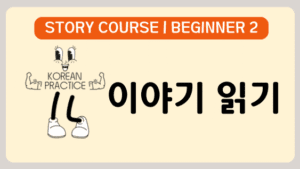
Most Korean courses stop at grammar. Mine goes beyond — with stories, Story Style Breakdown™, and real practice to help you speak.
Free Korean Flashcard
FAQs (What You Might Still Wonder About)
1. ❓ What is the most challenging aspect of Korean verbs conjugation?
The most challenging aspect of Korean verbs conjugation is memorizing the different verb endings for each tense and politeness level.
2. ❓ Can I use the same verb ending for all tenses and politeness levels?
No, each tense and politeness level has a different verb ending. Using the wrong verb ending can change the meaning of the sentence or be considered impolite.
3. ❓ How can I practice Korean verbs conjugation?
You can practice Korean verbs conjugation by using online resources or language learning apps that provide conjugation exercises.
4. ❓ What is the best way to memorize Korean verb endings?
The best way to memorize Korean verb endings is to practice regularly and read Korean stories in order to get used to them.
5. ❓ Why is politeness level important in Korean verbs conjugation?
Politeness level is important in Korean verbs conjugation because it reflects the social hierarchy and cultural norms in Korean society. Using the wrong politeness level can be considered impolite or disrespectful.
Final words
Korean verbs conjugation can be challenging, but it is an essential aspect of learning the Korean language. By mastering the basic conjugation rules and practicing regularly, you can become proficient in using different verb tenses. Remember to pay attention to context and use the appropriate level of politeness when conjugating a verb. With patience and practice, you can master the art of Korean verbs conjugation.
